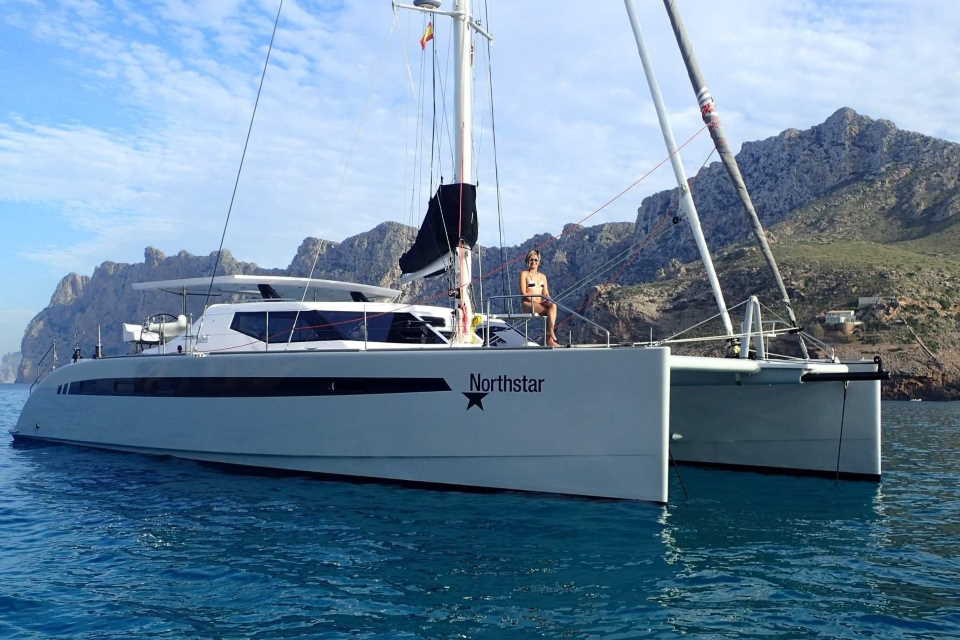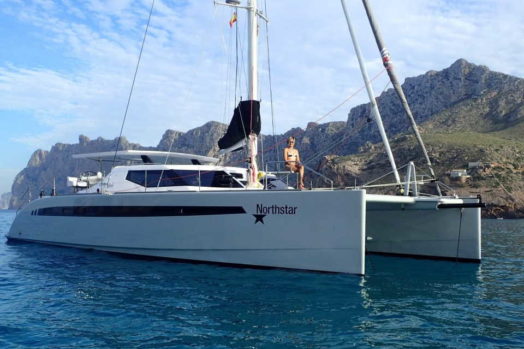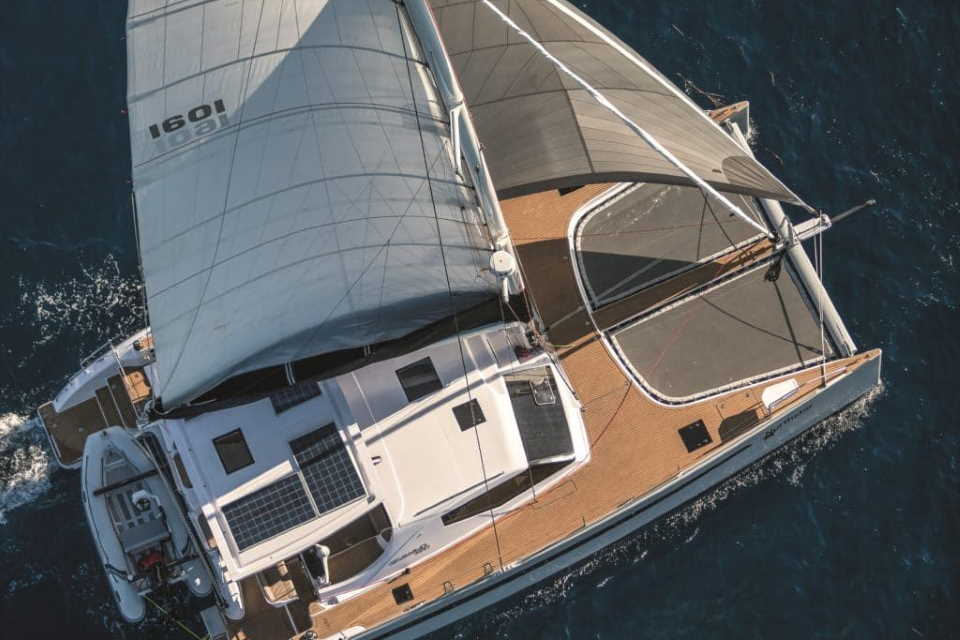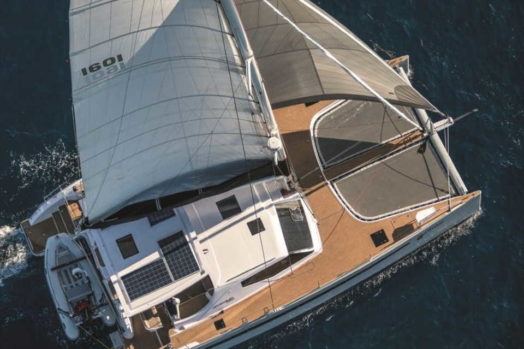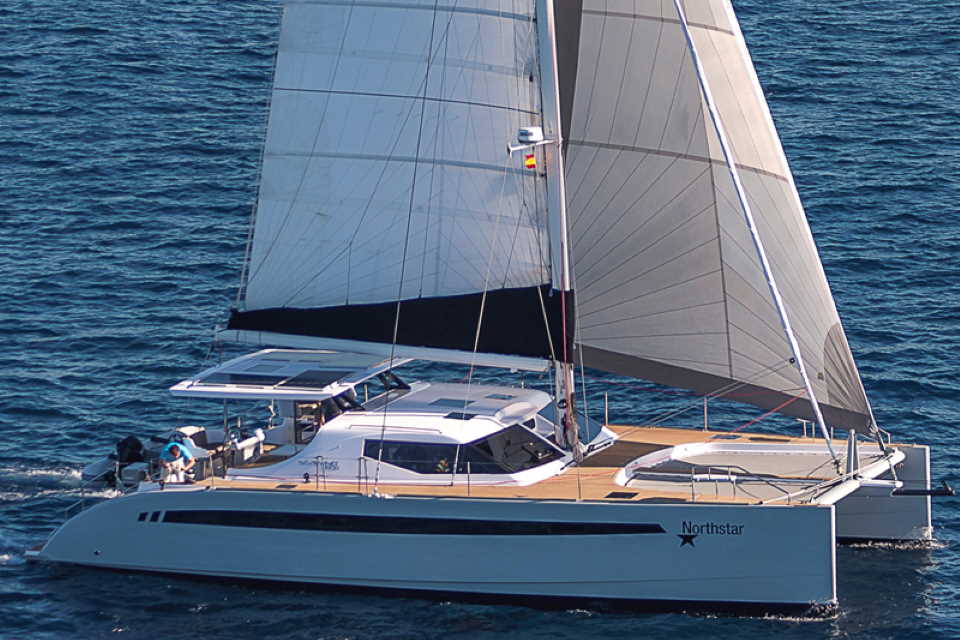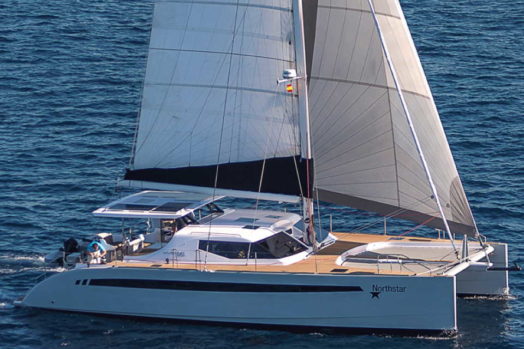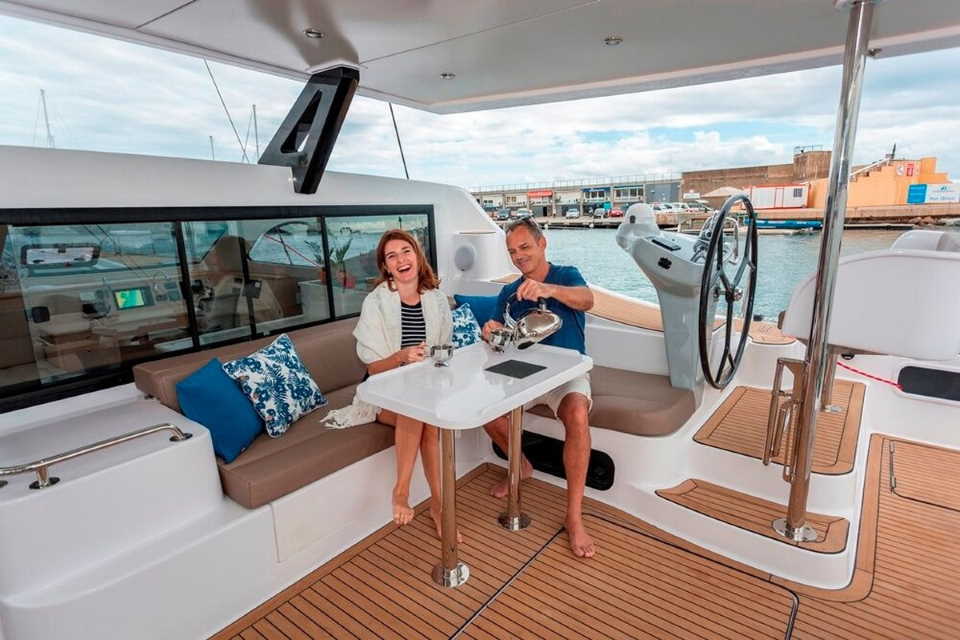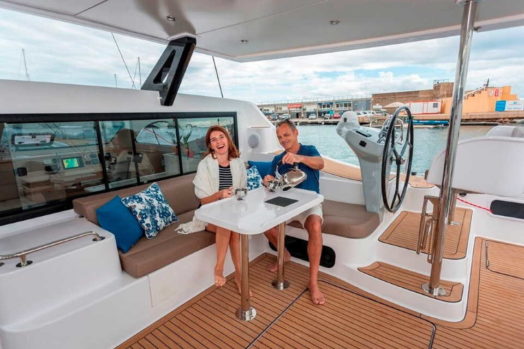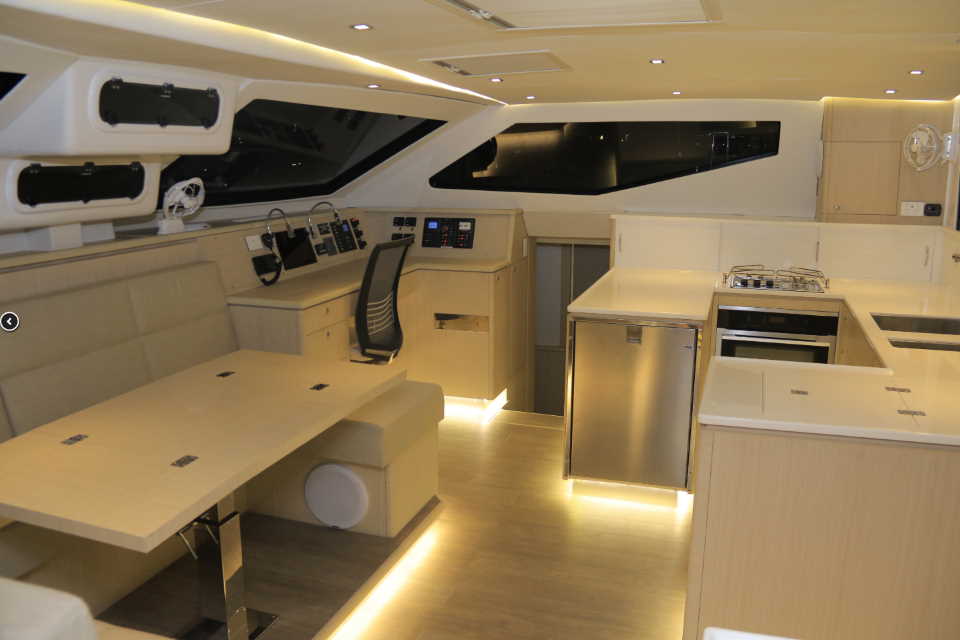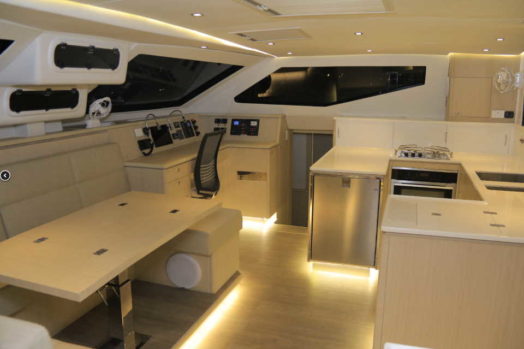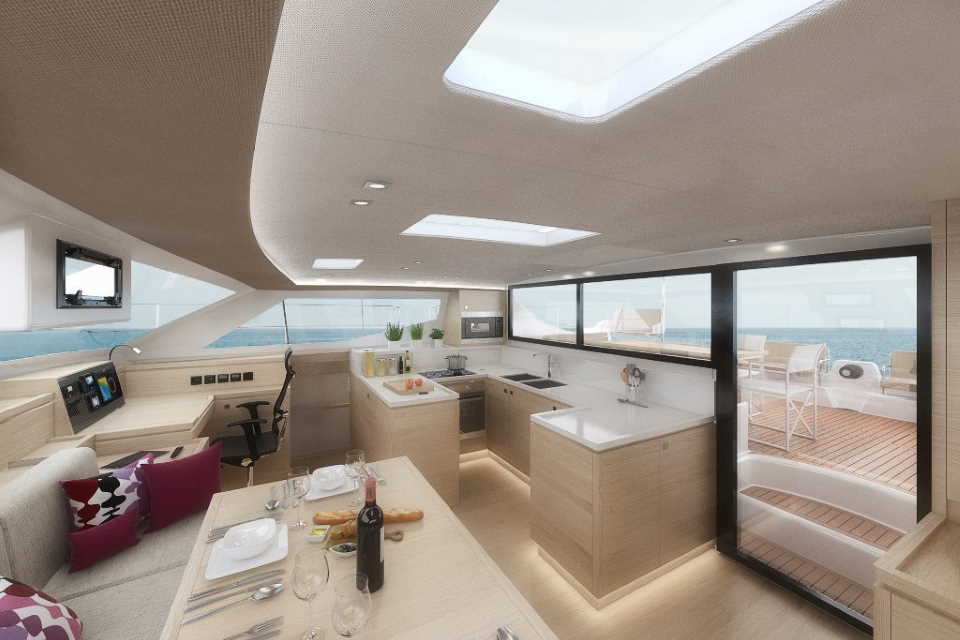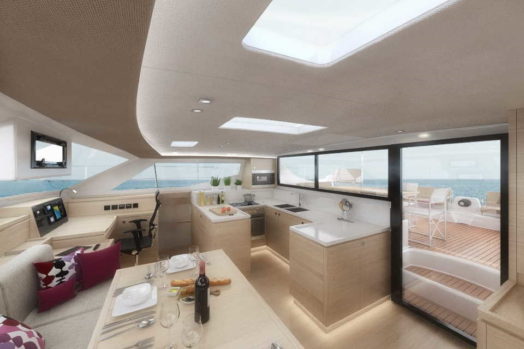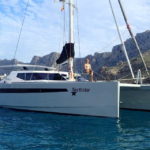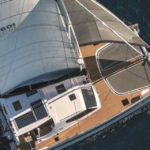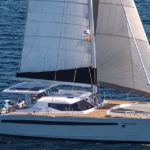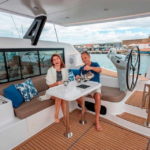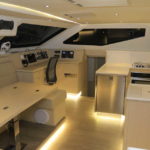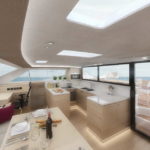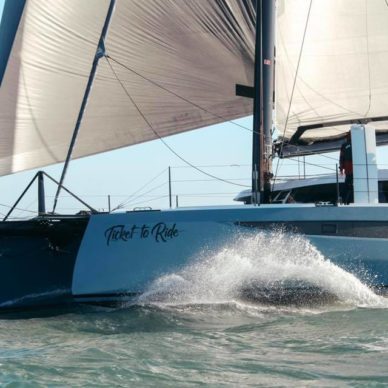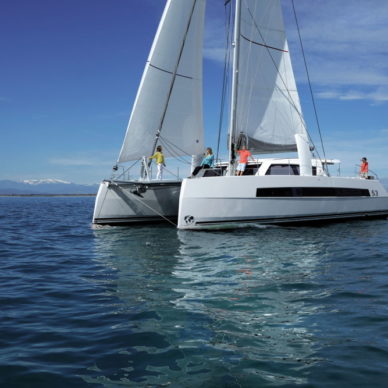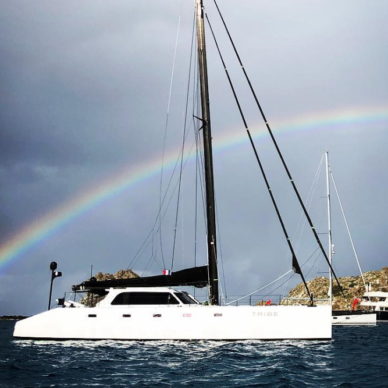Seawind 1600
Description
Seawind Catamarans is an Australian multihull brand that is fast gaining a great reputation among sailors for their designs. There are some great catamaran designs coming out of the southern hemisphere (read our McConaghy MC50 review for another example) – Seawind are definitely in the vanguard.
They moved their yard to Vietnam to become more competitive on costs, and this stylish 52 footer sets the new standard – it’s a completely new design from iconic supermaxi designers Reichel Pugh.
When you first step onto the Seawind 1600, you’ll note the sheltered aft deck with twin helms outboard behind the coachroof and the wide decks forward to the bows and trampolines. She has dagger boards in each hull that are flush with the deck when in the raised position and the overall look is very sleek. Retractable rudders aft are easily removed if you want to go really shallow. This design really moves the bar versus older competitors in this market (read our Catana 47 review for example).
Pros
- Those twin helms are set in a mid position and tuck halfway under the bimini: they are a real USP for this boat. They give you a fantastic combination of sailing feel and protection when you need it.
- This boat is good value for money. She is priced at around the same level as her major competitors (Outremer, ITA 14.99 etc), but I would say that the quality of the finish on this yacht is at the top end of the scale.
- The fully integrated daggerboards give her a great profile and deliver on performance.
- The running rigging is very well organised. The plan is similar to a Catana (tried and tested), with two mainsheet tackles and a central electric winch on the aft beam. The mainsail halyard, 3 reefing lines, topping lift and the solent sheet are all fed through a duct beneath the nacelle and fed to the mast foot. Very tidy and easy to manage with few hands on the ropes.
- The daggerboards are raised and lowered with lines again hidden beneath the deck.
- We also love the forward facing nav station / control centre. The visibility is great from here.
- Those Flexiteek covered side-decks are a head turner and feel great to walk on.
Cons
- The aft cockpit and saloon are on different levels, so you don’t get that big open space that you see on many modern cats. The flip side is that the interior feels cosy.
- The outside dining area is smaller than many boats we have seen of this size. She’s aimed at long distance cruisers.
- The price of this yacht starts to run away if you start opting for some of the carbon options (like the mast). But that is true of the competition I guess.
- This yacht has finely shaped hulls, so don’t expect a palatial cabin. But it is surprisingly roomy down below, you don’t really notice space being taken up by the daggerboards.
- The forward cabin(s) in particular are small. They are cosy queens, at best , we would say.
The Rig and Lines
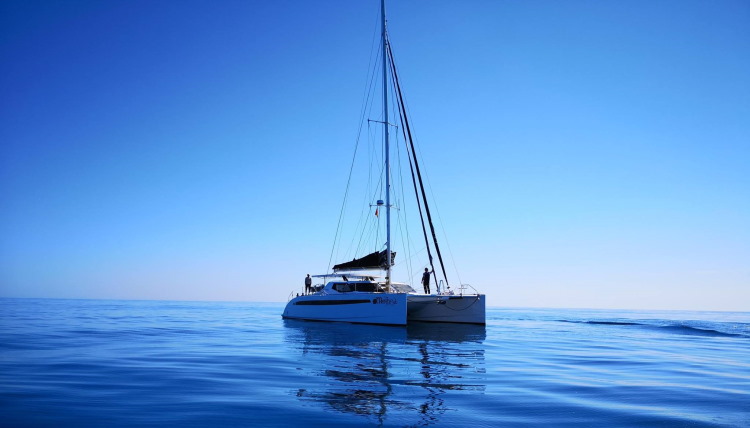 She has an All Yacht Spars double spreader rig stepped just ahead of the coachroof, which is easily climbed up via steps if you need to get to the boom.
She has an All Yacht Spars double spreader rig stepped just ahead of the coachroof, which is easily climbed up via steps if you need to get to the boom.
There’s a track for the self-tacking jib and most of the lines run tidily from here via a channel under the nacelle and back to the winch at the transom.
There are double sheets to control the main, which do the job as both trim and preventer without having to have a track (similar to a Catana set up). All lines including those for reefing come back to the cockpit for short handed sailing.
Most of the competition score highly in this regard, but the Seawind 1600 is particularly well organised (read our Outremer 55 review for another cat design that scores highly).
There are some neat touches in the running rigging set-up: the main halyard runs to the central aft pod electric Harken winch- again this reminds me of a Catana set up – and you can step out onto the side deck to make sure your mainsail clears the lazy-jacks when you are hoisting.
If you are single handed, you can use the remote buttons for this central winch to pull up the main, and the self-tacking jib unfurls nicely when you come off the wind. The furling line runs in a tube along the port side of the boat – very neat.
Once you are up and running, you’ll have the genoa sheet running to the central winch for easy trimming and the twin sheets running to the winches on wither side, port and starboard on the transom. If the wind picks up, it’s an easy job to centralise the mainsail if you need to gybe, for example, using the winches on each side on that twin sheet set-up. The jib is a piece of cake, of course, as it’s self tacking.
Power
She’s powered by twin Yanmar 80HP engines that sit in some very neatly designed bays aft. There’s plenty of workspace around each engine with all systems and service points above the bilge level.
You can see the quality of the steering system down here with large stainless rods to the rudders and a 54L/ph water maker (with air conditioner in another locker on the aft deck). I’d probably have a water maker retro fitted to a 100L per hour model.
Power is supplied from the engine alternators, and 800w of solar panels on the bimini, plus a bank of Mastervolt AGM batteries in the saloon with a 2200w Mastervolt inverter.
Design
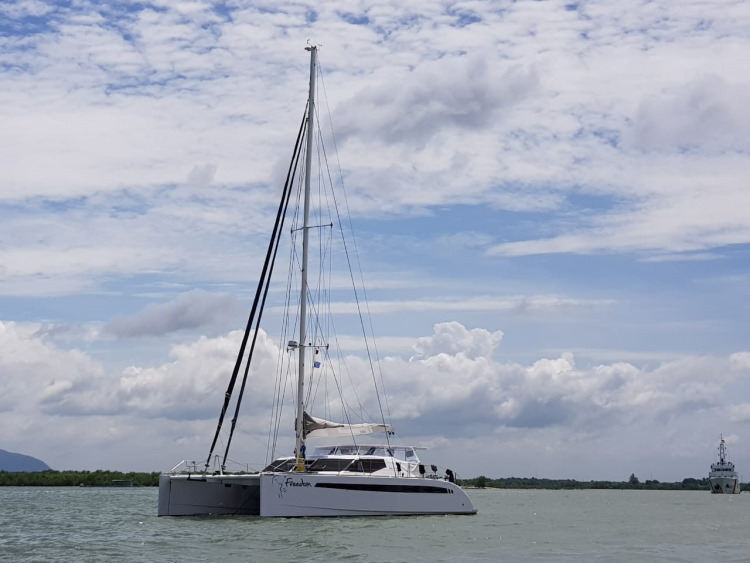 Seawind have come up with a neat compromise with the helm positions on this boat. This catamaran has twin helms with 2 double seats that are positioned underneath and outside of the coachroof, giving you the option to helm protected or unprotected. Visibility is great for a 52 foot boat.
Seawind have come up with a neat compromise with the helm positions on this boat. This catamaran has twin helms with 2 double seats that are positioned underneath and outside of the coachroof, giving you the option to helm protected or unprotected. Visibility is great for a 52 foot boat.
The decks are nice and wide, and all of the hatches are flush, so moving around the boat feels safe. This catamaran does have boards, but they are recessed, so you don’t have those as an obstruction as you are walking forward.
There are plenty of hand-holds and clip on points distributed around the boat- the builders have obviously put a lot of thought into maximising safety at sea. All the lines lead back to the cockpit and both helm stations have controls for the engines- you won’t need to spin the boat around to come in on the same side every time.
The aft cockpit is going to particularly appeal to sailors in warmer climes, it looks very “Ibiza Lounge”.
Interior
The saloon has four forward facing hatches- so there’s plenty of light and ventilation. The wrap around windows give you fantastic visibility forward and around. To port you have a big U-shaped sofa with a coffee table that folds out into a dining table: there’s plenty of space for entertaining.
On the starboard side is a forward facing nav station from which you can see your sails- a handy place to hang out on watch if the weather turns nasty. Behind the nav station is an ample galley with burners and a double sink. The design lends itself to being able to wedge yourself in if things get rough with a front loading fridge and a top loading freezer.
We like the way that you can throw open the large windows between the cockpit and the saloon. The Seawind is slightly unusual in today’s market in that you step down into the saloon- most cats these days have the saloon and cockpit on one level as one big open space. It definitely helps to give the boat more zones, although once those windows are thrown open, the two areas are pretty well connected.
Down Below
Guests will head down into the port hull which you can configure with twins aft or a queen size. There’s loads of storage down here and the quality of the finish, just like the saloon and cockpit, is very high.
There is another berth forward, and this is the big compromise for us, as this would have to be classified as a single rather that a double. That’s the price you pay for those slender hulls I guess.
In the master hull to starboard, the space forward is taken up by a roomy shower-room, and there are plenty of options for storage / washing machine etc down here. But all in all, you might be surprised at the size of the living accommodation down below – you just need to keep reminding yourself that this is a performance cat.
The forward guest cabin in the port hull is the big compromise – it’s going to seriously reduce your options if you have guests onboard.
Specs
The big news on the specs front is that boards up draft which comes in at a skinny 0.54m or 2’1″ : you can pull up the rudders as well, just like a Gunboat. Those rudders will slide in a hinged carbon housing which you can get to from the sugarscoops.
Displacement is 13 tonnes.
Sailing
The Seawind 1600 is an out and out performance cruising catamaran that is targeting speeds in the high teens and even over 20 knots in the right conditions on a broad reach.
With those daggerboards, she points well into the wind like an Outremer and is comfortable at an AWA as low as 35 degrees. Displacement is just 13 tonnes light, so she gets moving quickly and sails well in light airs.
Seawind 1600 Polar Digram
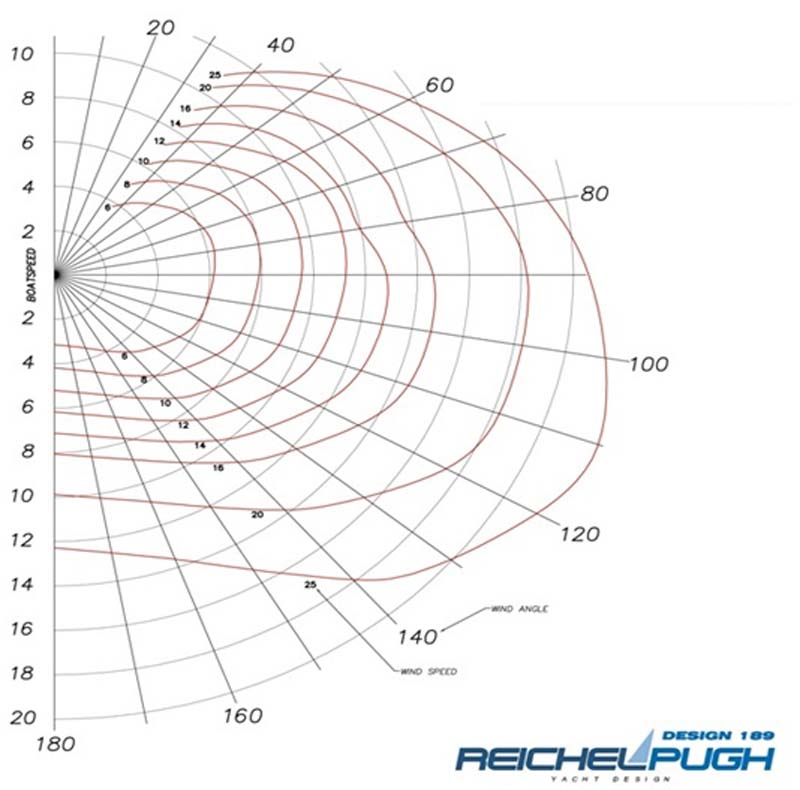
Price
The base price for a Seawind 1600 (Dec 2019) is around €780k and this jumps to around €850-900k once you have all of the options added. It will depend on what you go for I guess.
Summary
There is plenty of competition in this category with the Balance 526, Outremer 52 and HH50 all vying for honours in this 50 foot performance range. The Seawind 1600 is going to take some beating on the value for money stakes even if it still is a million dollar boat. You get a lot for your money – this is a very well thought out performance cruiser, our one big reservation is the size of that forward guest cabin.

